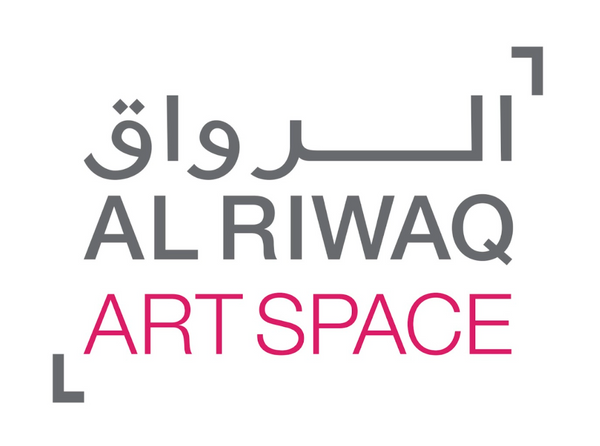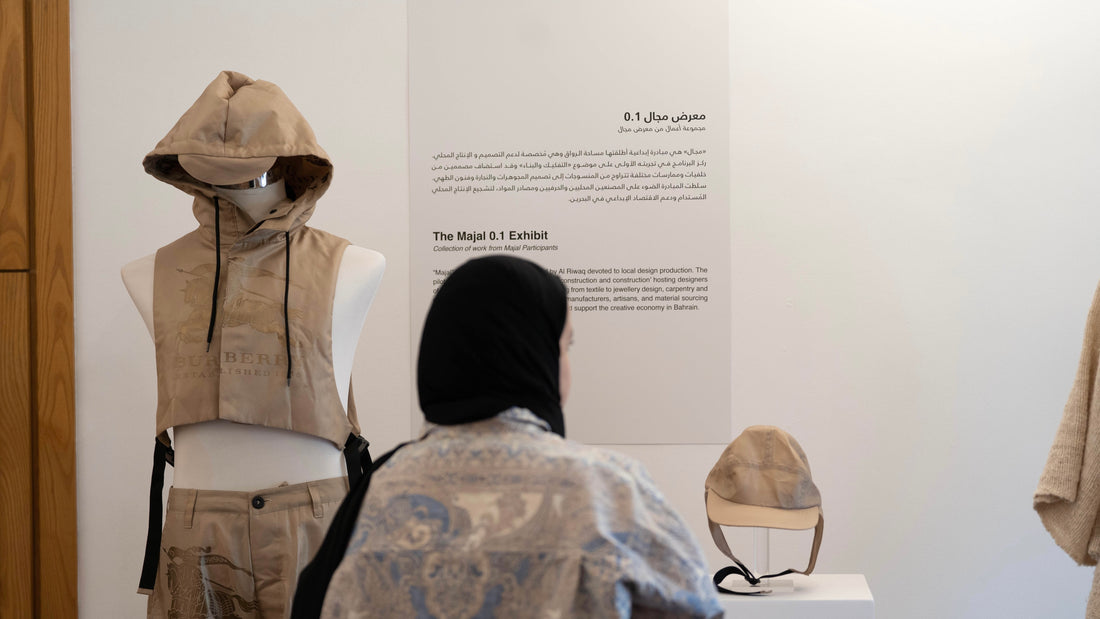The aim of the symposium is to bring together design practitioners, with different expertise and backgrounds, alongside the relevant institutions and cultural practitioners. Interested audiences will be invited to engage in reflective, critical and constructive dialogue around the art and design practice.
The Symposium is set to examine existing tools, resources and practice in the lines of design and production, and explore further possibilities and potential for growth, conversation, and collaboration. Design practice in Bahrain is at the crossroads for realistic and integrative future with unlimited possibilities.
During the "Approaching Design" Symposium, 12 exhibits were featured throughout the venue: On Fleeting (Hala Kaiksow), I Water My Flowers Every Morning (Abdulla Buhijji), Sacred Spaces 3 (Noor Alwan), The Tangerine Vase (Depart), El Masnad (Sana Alabdulwahed), UoB (Showcase), Seasonal Springs (Bahraini--Danish & Civil Architecture)
Tila Chair Shepherd Studio Hand-finished and composed of 210 stainless steel spheres, Tila Chair's design borrows its conceptual and aesthetic language from the traditional folk game of Tila, combining the communal nature of the game and its components as a metaphor for density. The array of entwined spheres shape the skin of the object, coupled by tubular profiles which creates its anatomy. Its chrome finish is intended to complement and reflect its context and surroundings.

In this challenge, we proposed participants to delve into the depths of digital fashion design, in particular handbags, and to explore the possibilities of applying it in ways that make it warm, human, and alive through the use of biomimicry, or bio fabrication. In collaboration between Idea lab, Ithra’s creativity and innovation unit, and Basque Bio-design Center in Spain, we developed a five-day challenge highlighting the integration of bio fashion and technology . 1 out of 11 local designers won the challenge. And from there, the Story of Perspective Bag was born. Manahel Al-qassem, an ambitious designer brought all her skills and talent to design and tell a story of her background, history and homelands architecture. About the Product: PERSPECTIVE Designed by Manahel Al Qassem Kombucha leather, Laser Cutting From the mesmerizing architectural landscape of my hometown Diriyah.


Nasim Javid is a professional designer interested in natural forms and alternative materials working with a skilled community of local producers within the Bahraini business ecosystem. This display offers a window into her exploratory practice and the processes she engages with in exercising individual expression. “As an artist and designer one experiences self-doubt, disappointment and a sense of failure when producing work. Yet these same emotions are often the most valuable tools in developing and executing an idea of both cultural identity and personal gratification. In collaboration with the craftsmen of the Souq, I recognized the importance of skilled workmanship that results in quality of an international standard that can only be produced through mutual respect and trust.” In the cabinet on display one will find a collection of objects that, through a visual language, outline the initial process of production, ideas, the materials that bring the ideas to actualization and the shortfalls in process. The items are presented as a physical sketchbook alongside the final signature pieces that define her as a professional designer. Items presented with a confidence that the work represents her original idea and the experience that the challenges of the production process have offered. Each work on exhibition has played and continues to play a vital role in Nasim’s identity as artist and designer. “I would especially like to thank those artisans of the Souk for being open and accepting of what they initially felt were non-traditional, questionable pieces of jewellery”.

What She Sees Kingdom of Bahrain. Pavilion at Expo 2020, Dubai. Mhairi Boyle exhibition (What She Sees), Focuses upon the physical and heritage environments of Bahrain, through the eyes of the Bahrain-based textile designer Mhairi Boyle. Experimenting with the archipelago’s resources, the designer collects seaweed samples from various coastal areas, as well as leaves, date skins and stones found inland, extracting natural colour from each species. She uses this natural catalogue to dye wool, linen, and cotton to create panels woven at the Bani Jamrah textile factory where traditional weaving has been practiced and passed on for generations. This exhibition narrates the history of the nation through its ever-evolving heritage craft, while conveying the story of experimentation and collaboration with artisan weavers. These natural woven panels, with their soft, pale colors, were inspired by the sea and the sails of banoosh dhow boats on which the pearling expeditions take place, the woven panels reference in their pattern, the wizar, a traditional garment worn by those legendary pearl divers.



Sacred Spaces 3 Noor Alwan Sacred Spaces is a hanging installation that features different embroidered patterns which represent a specific style of drawing that the artist’s grandfather practiced. Alwan grew up watching her grandfather ritually draw hundreds of patterns on pages for hours- a tradition that stemmed from his childhood through a process of serenity, meditation, repetition and immersion. What started as an introspective experiment through embroidery by the artist developed into a shared family activity that entailed a collective meditative feel and a sense of bonding among members with stories exchanged during sewing every Friday. Alwan projects her perceived identity through the work and attempts to re-tell a story that crosses generations and brings it to a broader audience as a shared meditative experience.

“Majal” is a creative initiative launched by Al Riwaq devoted to local design production. The pilot program focused on the theme of ‘deconstruction and construction’ hosting designers of various backgrounds and practices ranging from textile to jewellery design, carpentry and culinary arts. The initiative highlighted local manufacturers, artisans, and material sourcing to encourage sustainable local production and support the creative economy in Bahrain.


Seasonal Springs Bahraini-Danish and Civil Architecture As water scarcity remains one of the greatest challenges facing Bahrain, the harvesting of rainwater presents a missed opportunity. Over the course of one or two days, heavy annual rains in the Gulf produce a short-term landscape of ponds, lakes, and canals. These seasonal floods previously played a large role in recharging the aquifer and helping minimize the reliance on groundwater for agriculture. Today, with the hardscape of the built up city, the water has pooled, causing flooding and disabling infrastructure. The rainy season has drawn the ire of the citizenry. The solution to these liminal bodies of water has largely been to pump the water into tankers and dump it into the sea. For the Kingdom of Bahrain’s participation in the Expo 2020 Dubai Water Week, Civil Architecture and Bahraini—danish proposed a series of temporary fountains. As opposed to getting rid of the ponds or the water, the proposal suggests a temporary infrastructure celebrating the change of seasons rather than looking to hastily eradicate it, allowing the pools to become temporary public installations until they dry up. The fountains remain largely inactive for a portion of the year. During the rainy season they are activated, and in turn activate rain pools and low-lying areas. Instead of removing a problem or attempting to move it as quickly as possible, the proposal suggests celebrating the passing of time and the sudden deluge with a fountain as a way of acknowledging the changing of seasons rather than working towards a ubiquitous, seasonless present.


